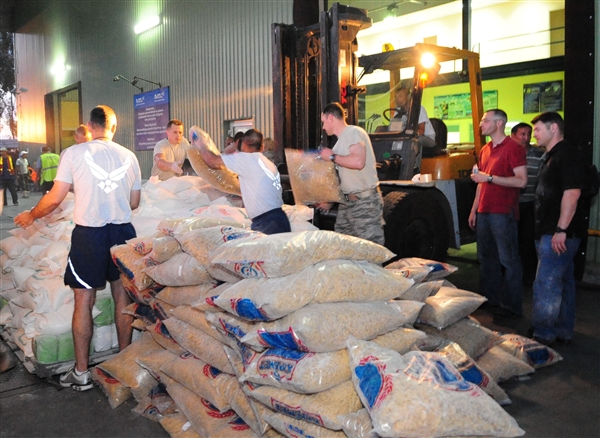WASHINGTON, April 28, 2010 — Stability in Afghanistan is no longer on the decline, and most Afghans believe that despite increased violence, security actually has improved since this time last year, according to a new report Pentagon officials sent to Congress today.
The congressionally mandated Report on Progress Toward Security and Stability in Afghanistan attributes the 87 percent increase in violence from February 2009 to March 2010 largely to increased U.S., coalition and Afghan national security force activity, particularly into areas where they previously had not operated.
The report, which covers the situation on the ground from Oct. 1 to March 31, cites progress in President Barack Obama’s strategy aimed at disrupting, dismantling and defeating al-Qaida in Afghanistan and Pakistan. But it offers what a senior defense official speaking on b ackground called a sobering assessment of the conditions on the ground, and a recognition of the importance of what happens within the next six months in determining the direction the operation ultimately will take.
Despite increased violence, the report notes that the downward trend in stability appears to have stemmed, along with Taliban momentum. But it’s far too soon to say the corner has been turned, the official told reporters.
“We are on the cusp,” he said. “We are no longer moving in the wrong direction.” He cited signs that he said indicate “we are moving in the right direction.”
U.S., coalition and Afghan forces activity has played a major role in changing that dynamic as they extend their reach into more Afghanistan districts, the official said. He expressed hope that their population-centric tactics will help to sway more Afghans toward supporting the democratically elected Afghan government. That, in turn, could serve as a fulcrum that could “change the dynamic of the whole country,” he added.
As of March 31, about 87,000 U.S. forces were on the ground in Afghanistan, with additional forces to bring that number to 98,000 by August. In addition, 46,500 international forces are serving in Afghanistan, with 38 countries pledging about 9,000 more troops to support operations, tactics and training. As of March 31, 40 percent of those additional troops had arrived in the country.
The report cites requirements that international partners have not filled – primarily for trainers and mentors to support development of Afghan security forces, particularly the police force, which lags behind the Afghan army.
The defense official cited additional international troop commitments since the report closed March 31, including 20 to 30 percent more institutional trainers.
But while NATO allies and partners are “cautiously optimistic” about success of the International Security Assistance Force mission, many national leaders express concerns about dwindling popular support for the mission within their countries, the report noted.
As of March 31, the Afghans had fielded about 113,000 army troops and 102,000 national police officers. They are broadly on track to meet targeted growth figures of 134,000 for the army and 109,000 for the police by October, the report said, and 171,600 soldiers and 134,000 police officers by October 2011.
Another report the Defense Department sent Congress today — the U.S. Plan for Sustaining the Afghanistan National Security Forces — cites continued improvements in building capacity as well as end strength in these forces. It notes new initiatives during the past year designed to speed up this process, including organizational changes to the NATO command structure to improve unity of command and embedding international forces with Afghan security forces at all levels to promote mentorship and leadership development.
The report recognizes that for Afghan forces to be prepared to take the security lead, other elements also must be in place — governance, courts, judges, prosecutors and correctional capacity, among them.
The Afghanistan security and stability report also acknowledges that Obama’s Afghanistan strategy requires increased civilian as well as military capacity. The State Department has tripled its civilians on the ground since January 2009, to 339, to support the governance and development goals in Afghanistan that are critical to sustaining improvements in the security situation, the report said.
“It’s not all about security,” the defense official told reporters. “It’s about what security enables.”
Source:
U.S. Department of Defense
Office of the Assistant Secretary of Defense (Public Affairs)

 von
von 